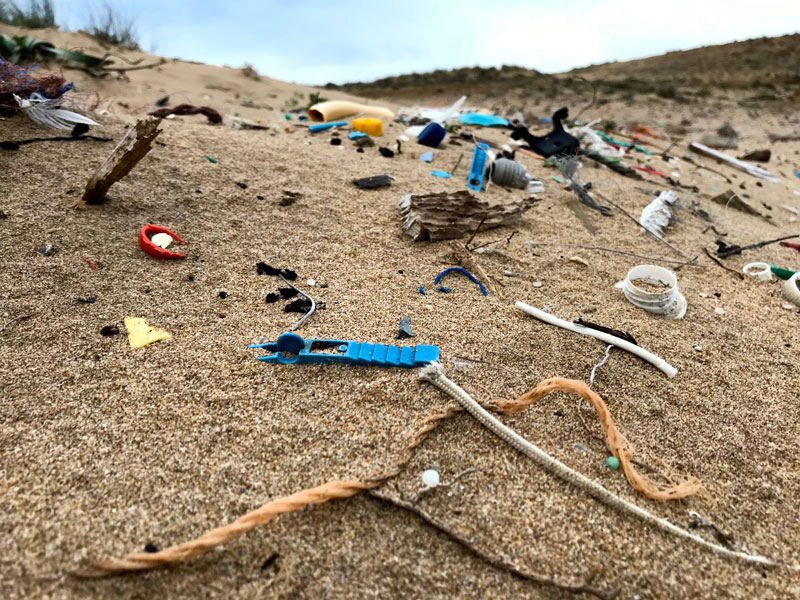
Plastic pollution. Photograph: © SAF — Coastal Care
Excerpts;
University of Exeter scientists found an average of 5,300 particles of plastic per cubic metre at depths of 60cm (2ft) on beaches in Cyprus used by green turtles and loggerheads.
“Unlike the beaches in China where the highest levels of microplastics have been recorded, these beaches in Cyprus are located far from industrial practices and aren’t visited by large numbers of people,” said Professor Brendan Godley, leader of the University of Exeter’s marine strategy.
“Therefore it seems that microplastics are arriving on ocean currents. In this case, our analysis suggests most of it came from the eastern Mediterranean basin. This is also true of the large plastic items found on the beaches in Cyprus in large numbers.”
The findings support the theory that beaches act as a “sink” for marine microplastics, becoming key areas for contamination…
Read Full Article, Phys Org (09-26-2018)
Micronizing ocean plastics threaten sea turtle populations, ocean life cycle; Science Daily (09-17-2018)
Ingestion of degrading ocean plastics likely poses a substantial risk to the survival of post-hatchling sea turtles because the particles can lead to blockages and nutritional deficiencies, according to new research…
The Plastic Found In a Single Turtle’s Stomach, Daily Mail (03-24-2011)
Plastic Pollution / When The Mermaids Cry: The Great Plastic Tide, Coastal Care
“The unprecedented plastic waste tide plaguing our oceans and shores, can become as limited as our chosen relationship with plastics, which involves a dramatic behavioral change on our part…”









